I don’t know if we’re cursed or what, but we’ve had two trees exhibit a strange, disfiguring phenomenon wherein the top part of the trunk — the “leader” — has died, taking with it numerous scaffold branches and leaving an unsightly, shortened trunk surrounded by perfectly healthy branches.
One was a cedar elm (Ulmus crassifolia), and the other, a Texas red oak (Quercus buckleyi).
The cedar elm was fairly young, only about 8 feet tall, when its top died. The tree was located in a prominent place on our corner suburban lot, so we dug it up and moved it to our side yard, behind a fence.

We link to vendors to help you find relevant products. If you buy from one of our links, we may earn a commission.
We didn’t hold much hope for it, because after we lopped off the top, all that was left was a crazy array of lateral branches radiating out from what was left of the center trunk.
The red oak was about 10 years old and 40 feet tall when its top died. As large as it was, quite a few large scaffold and lateral branches also became firewood.
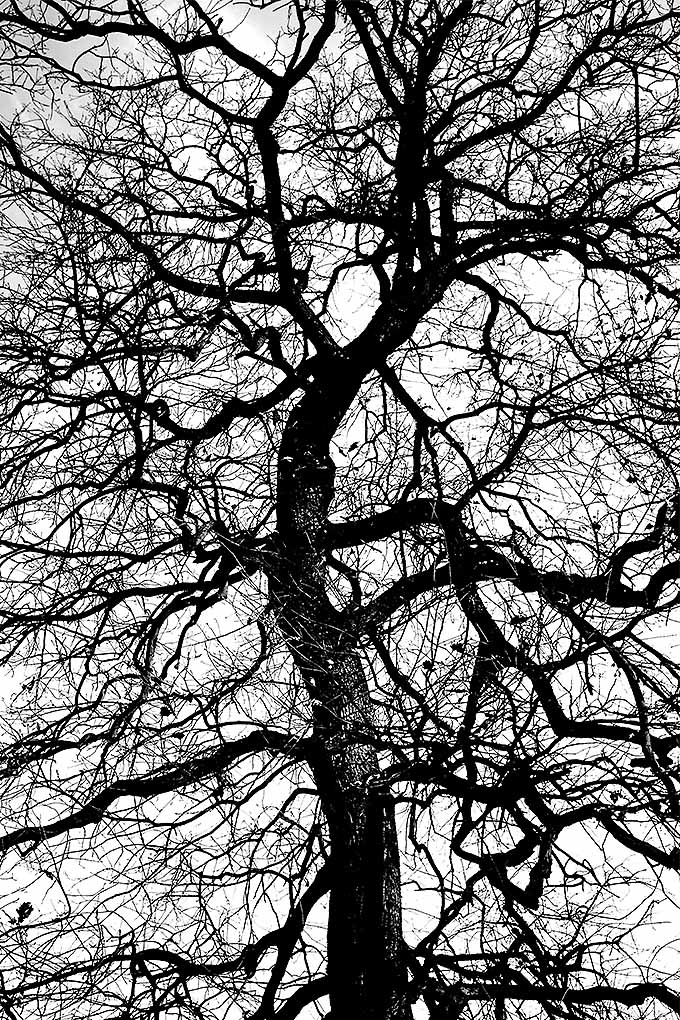
Read on to learn more about the fate of our trees!
Common Causes
What causes the top part of a tree to die? It could be any of a number of things. Let’s examine them in more detail:
Root Stress
Root stress is among the most likely causes of the demise of the top of the tree.
“A tree tries to maintain a balance between the top and the underground system,” says Skip Richter, county extension agent in horticulture for Harris County, Texas. “There’s a constant flow both ways. If you lose roots, you’re going to lose something above ground.”
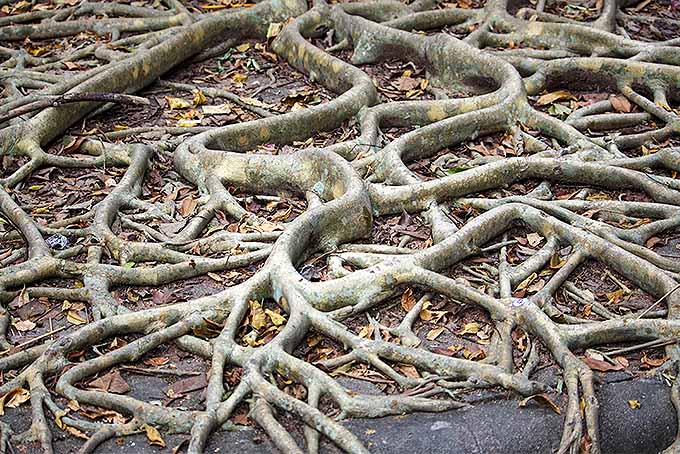
Recent construction near the tree, or soil compaction from other causes, can stress roots. “In suburban environments, we build houses, streets, and sidewalks near trees,” says Richter. “All of these can cause issues.”
Another form of root stress comes from root girdling — when the roots coil around the base and constrict the flow of sap.
This can happen when trees are grown in containers, and the problem is exacerbated when they are brought home from the nursery and planted too deep.
Drought
A lack of adequate water can lead to death of the top part of a tree as well. “Make sure your tree gets a good soaking on an infrequent basis,” says Richter. “Most of our watering is too little too often.”

Richter suggests watering to a depth of two inches every two weeks if it’s been dry. And he suggests using a rain gauge or a straight-sided can to measure.
Remember to soak the ground until you start to see runoff, pause for an hour or so, and then resume watering until you get the two inches. “You want the top 10 to 12 inches of soil to be quite wet,” says Richter. “That’s where 90 percent of the roots are.”
Insects
Bark beetles, such as emerald ash borers and bronze birch borers, are a less common cause of the decline of the top of your tree, and most commonly affect very young or old trees, says Richter.
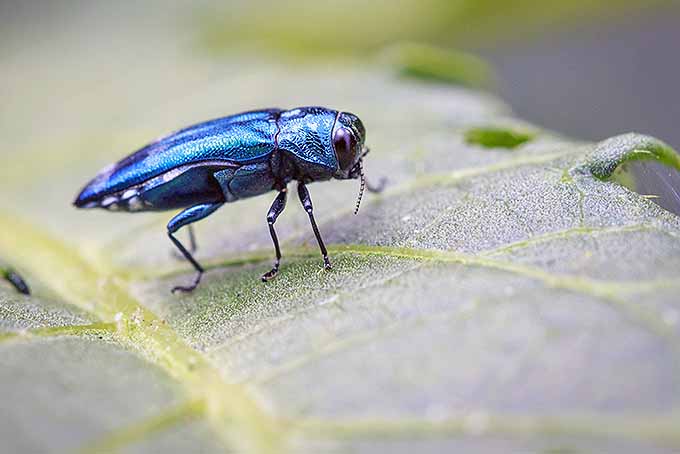
Check for entry and exit holes in the branches and trunk. If woodpeckers are around, that can be a clue that beetles are present.
If you do indeed suspect an insect infestation, an insecticide might be effective, says Richter, “But the bugs are often inside, under the bark and out of reach of the chemicals.”
Inadequate Soil
Soil problems can also lead to treetop death.
Thin, inadequate soil may not provide enough stability or nutrients to maintain a healthy tree. Rocky soil can result in similar issues. Sandy soil may not hold moisture well, and can also be a bit of a problem.
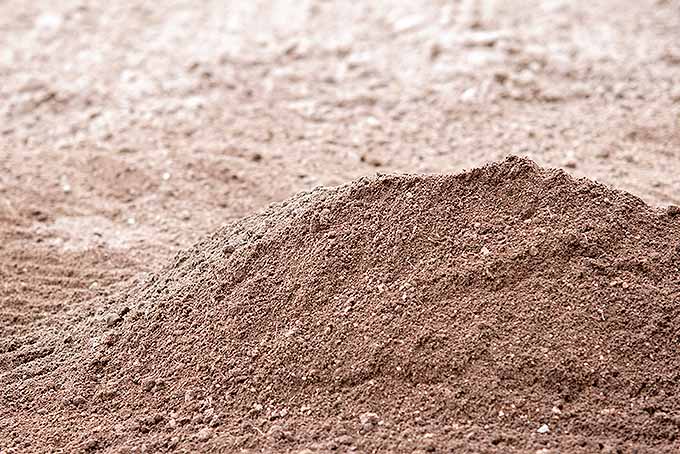
Be sure you’re planting trees that, if not native, are at least adapted to your area. “Make sure you know your yard, and know your tree’s necessary growing conditions,” says Richter.
If your tree is planted in a lawn, he cautions against using fertilizers that have herbicides mixed in.
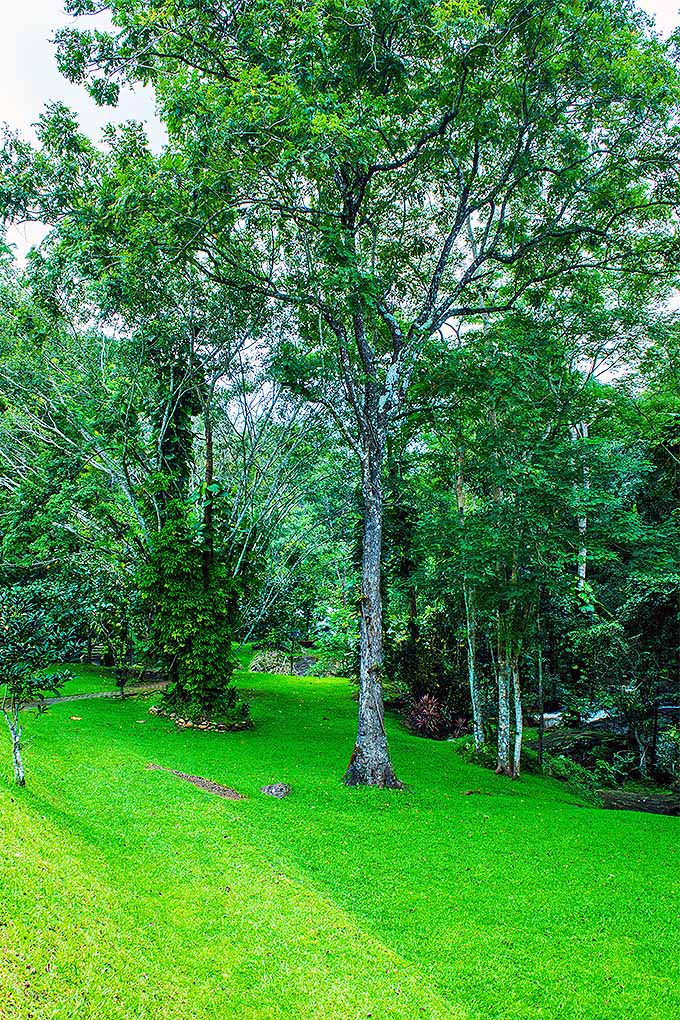
“Weed killers get washed down into the root system,” he says. “I see a lot of injury to trees from lawn weed killers. Nobody applies them correctly.”
If you must use an herbicide, Richter says, “Don’t use too much and don’t do it before a rain. That combination gets down into nearby trees’ root systems.”
What to Do?
Should you suffer the loss of the top of a tree, immediately cut back the deadwood, suggests Richter. In fact, Richter recommends you bring in a certified arborist to help you remove the dead material properly.
“Anybody can go out and buy a chainsaw and trim trees,” he says, “but we see a lot of bad pruning jobs by uncertified hacks, and we see the trees suffering because of it.”
If you need to find a certified arborist in your area, Richter suggests visiting the Trees Are Good website.
Water and fertilize your sick tree, too. And hope. “There’s not much else you can do,” says Richter.
The Good News
Mother Nature is resilient. She wants her creations to thrive, and often they do.
Our cedar elm miraculously sprouted a new leader — a pair of leaders, actually, as if the extra was there for insurance. Many years later, the elm is thriving in its new location.
The red oak’s misfortune is more recent, and while we’ve cut the dead leader and limbs, we still await its ultimate fate.
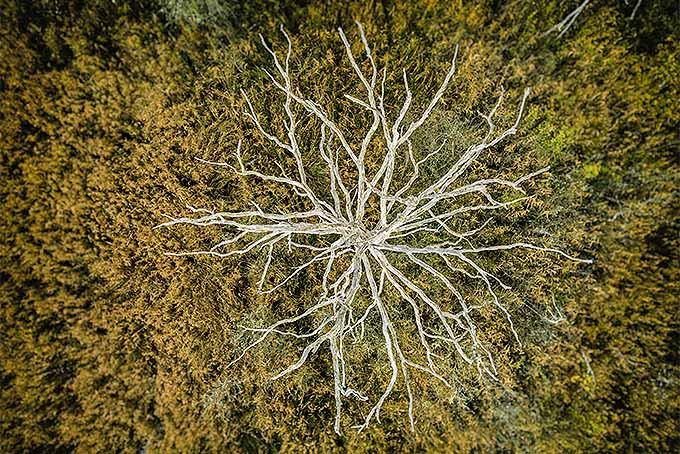
The rest of the oak seems fine, so we’ll hope it shoots up a new leader and continues to provide shelter for the flippin’ squirrels who leap from its boughs over to our magnificent fig tree for a tasty snack. Grrrr…
Has this ever happened to you? What did you do to remedy the problem, and what was the result? Share in the comments section below.
Photo credit: Shutterstock.
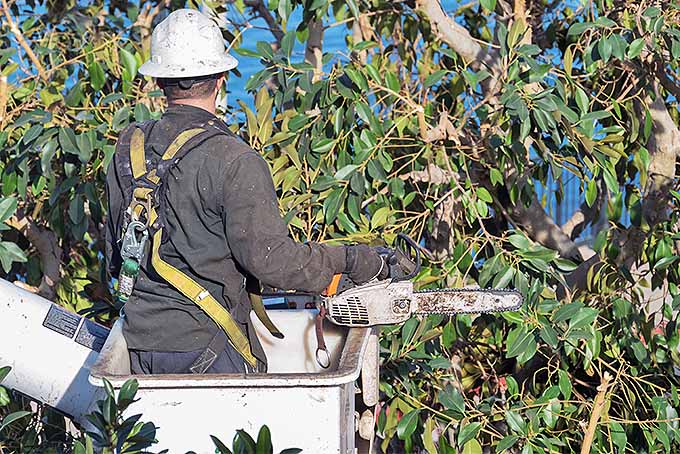

The tree in the picture was healthy last year, no signs of distress. I am in souther be New Hampshire and we had a fairly mild winter but there extreme swings in the weather, very warm one week and then cold and it has been a rainy spring.
There were no buds on this tree and now there is only new growth on a couple of the limbs. What would cause this and is there any chance for the tree to recover?
Thanks,
Scott
Hi Scott! thanks for reading this article. I’m not sure which picture you’re referring to. It sounds like you might have to hire an arborist to have a look at your tree.
I had two trees die from the top down at our beach home on a barrier island off of N J. I was sick over it because there are not many trees that grow on the island. I had a tree service do a deep organic fertilizer and the tree looked good this Spring. Then in June the top died ,I had the same tree service come and remove all of the dead lead branches. I was so sad seeing the new shape of my larger tree. I had questioned if it could be the weed killer that was being… Read more »
I’m so sorry. It’s very sad when this happens to a tree. I would be interested to hear what the arborist says; please come back and post again when s/he has shared her/his expertise.
Gretchen thanks for this article, I live on the coast of NC and having gone through a significant hurricane last fall, the top 10 feet or so of my sycamore tree appears to be dead but the bottom (around the base) is producing new branches? Could the condition of the top be due to insult from the storm (which was followed by an unusual amount of rain throughout the winter)? I feel like the new growth is a good sign, but also would make for a weird looking tree if I was to leave it, as there is about 6… Read more »
Hi Cyndi! First, congrats on surviving the hurricane — scary! Is all of the tree dead except for the growth at the bottom? Or are the lower branches (6 feet up) still alive and just the very top is dead?
I live in northeastern Ohio about 25 miles, direct line, to Lake Erie. Our village planted a Nyssa sylvatica (sour gum) in the tree lawn (area between sidewalk & street) in spring 2018. A number of branch ends died, but the tree as a whole got through the summer quite well. We use gator bags, & the village keeps them filled the first year. Unfortunately, one of the branch ends that died on my tree was the leader. The remaining two side branches just below where the leader was lost, though healthy looking, seem to be flopping downward with neither… Read more »
Hi Mike. I’m sorry to hear about your tree. My big red oak lost its leader to ant damage about 2 years ago, and there is a branch that’s heading north, but it’s taking it’s sweet time. Definitely not a leader yet. I don’t know a lot about sour gum; you might want to reach out to your county extension service and see if they have info about that specific tree.
Planted 4 Autumn blaze maples in the heat of summer last year (Alabama) watered as much as I could. They are starting to grow this spring and it looks like two of them have the top main branch dead. They were about 10 feet or so tall when planted. Can they be saved? Thanks.
Planting your trees too close together, a lack of adequate irrigation, rocky soil, and other factors can all lead to death of the tops of your trees, and young tree are particularly susceptible to stress until they become established. If you don’t note any insect damage or other obvious issues, you might want to consider transplanting if the trees seem to be crowding each other out. Prune away the dead portions, and provide supplementary water this year as needed. With any luck, they’ll bounce back.
My son planted this little Cherokee dogwood a few years ago. It never thrived, but then last fall the tree service dug it up when they took down a big tree and replanted it, and since then it has looked dead, especially the leader. This spring it surprisingly bloomed beautifully, but the branches are still bare aside from the blooms. I’m going to try to remove the dead leader and see what happens!
Lovely blooms! Please let us know how the pruning goes.
I live in west Texas and have a very young ash tree (about 8 ft tall) that we just planted last year.. We had a very strange winter where it snowed 8 inches… our poor ash never came back.. However, we have recent found it sprouting suckered but nothing from the few branches at the top… I have done a few scrape tests along the trunk and only the bottom foot and a half is soft every where else seems quite dead… how should I cut it to hopefully get it to come back???
Thanks for your message, Beth. Unfortunately, if such a small portion of your tree is showing signs of life, removal may be your only option. Stressed trees produce suckers, and these are called “watersprouts” when trees develop them higher up the trunk. Unfortunately, wounding or stressing the tree further via pruning can actually encourage more of these suckers to grow. Suckers also tend to develop when an established tree is approaching the end of its life. Can you post photos here? It might be time to consider calling in a professional arborist to assess your tree, and check the terms… Read more »
I planted a young red bud last spring, and most of the bottom branches have started to come back and bud this spring, however the leader and all the branches from the leader are completely dead. I have broken off the dead smaller branches, but am wondering if I have to remove the leader too? It’s almost half of the height of the tree that’s dead… could I train a new leader? Or would I be better off getting a new tree?
Redbuds are such beautiful trees- sorry to hear that yours has lost its leader! Have you been able to determine the cause of the dieback? If fungal disease is at play, or issues with the soil, you may need to make amendments or provide treatment to save it. You should be able to train a new leader, if you are able to prune away any competing leaders. Select the strongest, straightest branch to establish the new leader. And when you are pruning, keep in mind that it’s best to make your cuts at a 45-degree angle with a sharp tool… Read more »
This is great advice, thank you! I don’t know the cause of the dieback. Other plants and shrubs seem to be growing fine in the very same bed around the tree… so would you recommend waiting until winter to cut the current leader in order to train the new leader? I didn’t know that about the angled cuts of pruning! Learning so much… thanks!
I’m actually going to add a caveat to the advice I gave you before, Yusun. Pruning when dormant during the winter is recommended for many types of trees. However, since redbuds bloom in the spring, bud set begins in the fall and winter, and you don’t want to risk cutting those developing buds off. When your tree has finished blooming, I’d go ahead and prune. But take your climate into consideration. I’m not sure where you are located, but if you live in a place that typically gets a lot of rainy weather in the summer, it may be best… Read more »
Ok yes good advice, thanks Allison! We live in central Ohio. We get most of our rain in the spring and it dries up quite a bit in the summer and into the fall. I’ll wait until our rainy season slows down (we are getting a ton of rain right now) before pruning. I appreciate your feedback so much!!!!
You’re welcome! 🙂
Thank you for the advice. I will get out there and trim my cedars.
Probably caused by rocky conditions and drought in the Texas hill country.
I am not sure if I killed my trees by over pruning. The tops look dead and the bottoms are growing. Please offer suggestions.
What kind of trees are you growing Lisa, and where are you located? Can you upload photos here?